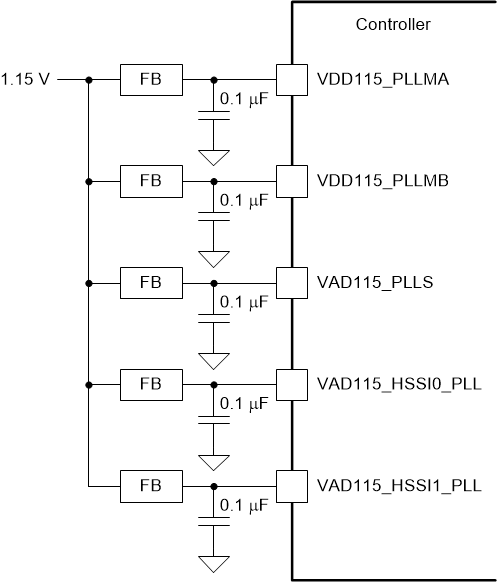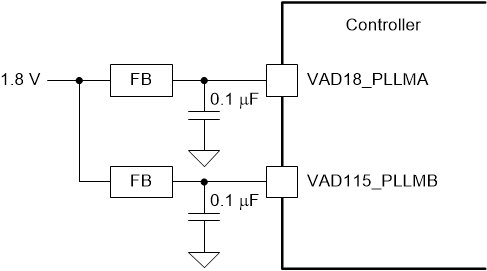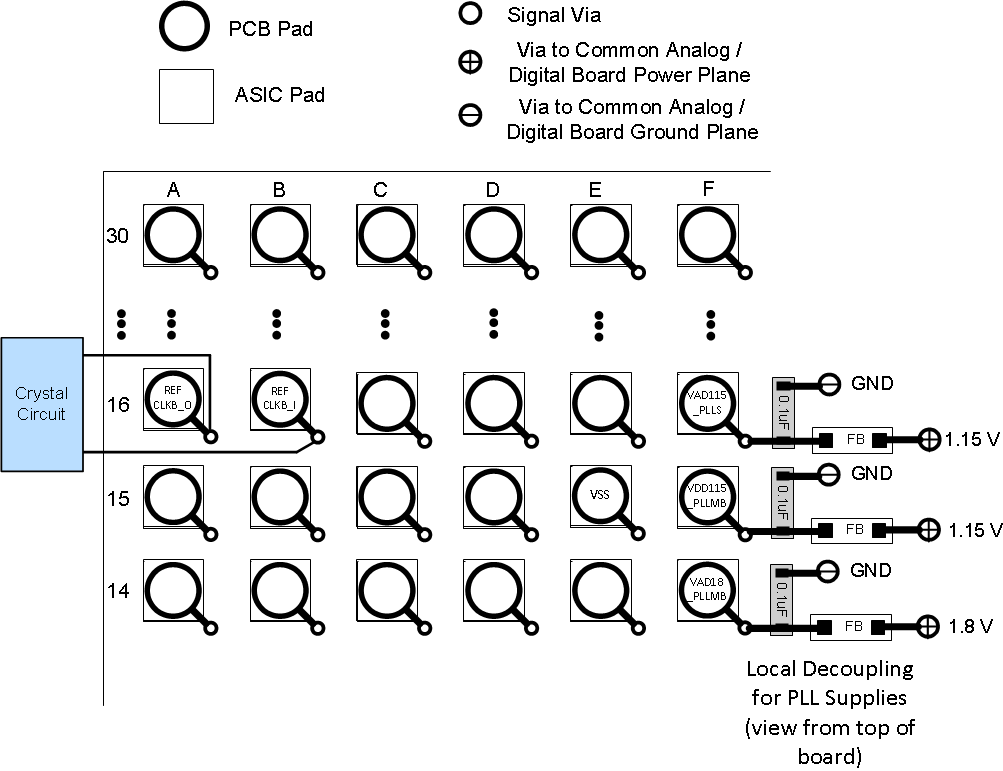ZHCSNH1C May 2021 – November 2022 DLPC6540
PRODUCTION DATA
- 1 特性
- 2 应用
- 3 说明
- 4 Revision History
- 5 Pin Configuration and Functions
-
6 Specifications
- 6.1 Absolute Maximum Ratings
- 6.2 ESD Ratings
- 6.3 Recommended Operating Conditions
- 6.4 Thermal Information
- 6.5 Power Electrical Characteristics
- 6.6 Pin Electrical Characteristics
- 6.7 DMD HSSI Electrical Characteristics
- 6.8 DMD Low-Speed LVDS Electrical Characteristics
- 6.9 V-by-One Interface Electrical Characteristics
- 6.10 USB Electrical Characteristics
- 6.11 System Oscillator Timing Requirements
- 6.12 Power Supply and Reset Timing Requirements
- 6.13 DMD HSSI Timing Requirements
- 6.14 DMD Low-Speed LVDS Timing Requirements
- 6.15 V-by-One Interface General Timing Requirements
- 6.16 Source Frame Timing Requirements
- 6.17 Synchronous Serial Port Interface Timing Requirements
- 6.18 Master and Slave I2C Interface Timing Requirements
- 6.19 Programmable Output Clock Timing Requirements
- 6.20 JTAG Boundary Scan Interface Timing Requirements (Debug Only)
- 6.21 JTAG ARM Multi-Ice Interface Timing Requirements (Debug Only)
- 6.22 Multi-Trace ETM Interface Timing Requirements
- 7 Detailed Description
- 8 Power Supply Recommendations
-
9 Layout
- 9.1
Layout Guidelines
- 9.1.1 General Layout Guidelines
- 9.1.2 Power Supply Layout Guidelines
- 9.1.3 Layout Guidelines for Internal Controller PLL Power
- 9.1.4 Layout Guideline for DLPC6540 Reference Clock
- 9.1.5 V-by-One Interface Layout Considerations
- 9.1.6 USB Interface Layout Considerations
- 9.1.7 DMD Interface Layout Considerations
- 9.1.8 General Handling Guidelines for Unused CMOS-Type Pins
- 9.1.9 Maximum Pin-to-Pin, PCB Interconnects Etch Lengths
- 9.2 Thermal Considerations
- 9.1
Layout Guidelines
- 10Device and Documentation Support
- 11Mechanical, Packaging, and Orderable Information
9.1.3 Layout Guidelines for Internal Controller PLL Power
The following guidelines are recommended to achieve the desired Controller performance relative to the internal PLLs. The DLPC6540 contains multiple internal PLLs which have dedicated 1.15-V supply pins and 1.8-V supply pins which are listed below:
- VDD115_PLLMA
- VDD115_PLLMB
- VAD115_PLLS
- VAD115_HSSI0_PLL
- VAD115_HSSI1_PLL
and
- VAD18_PLLMA
- VAD18_PLLMB
It is important that each of these 1.15-V and 1.8-V supply pins have individual high frequency filtering in the form of a ferrite bead and a 0.1-µF ceramic capacitor. Ensure that the impedance of the ferrite bead is much greater than that of the capacitor at frequencies above 10 MHz. Locate these components very close to the individual PLL power supply balls. Recommended values, topology, and layout examples are shown in Table 9-1, Figure 9-7 and Figure 9-8, and Figure 9-9 respectively.
| COMPONENT | PARAMETER | RECOMMENDED VALUE | UNIT |
|---|---|---|---|
| Shunt capacitor | Capacitance | 0.1 | µF |
| Series ferrite | Impedance at 100 MHz | > 100 | Ω |
| DC Resistance | < 0.40 | Ω |
 Figure 9-7 1.15-V
PLL Power Supply Filter Topology
Figure 9-7 1.15-V
PLL Power Supply Filter Topology Figure 9-8 1.8-V PLL
Power Supply Filter Topology
Figure 9-8 1.8-V PLL
Power Supply Filter Topology Figure 9-9 PLL Power Supply Filter Layout Examples
Figure 9-9 PLL Power Supply Filter Layout ExamplesSince the PCB layout is critical to PLL performance, it is vital that the PLL power is treated like an analog signal. Additional design guidelines are as follows:
- Place all filter components as close to possible to each of the PLL supply package pins.
- Keep the leads of the high-frequency capacitors as short as possible, and as such, it is recommended that these capacitors be placed under the package on the opposite side of the board.
- Use a surface mount capacitor that is of high quality, low ESR, and monolithic.
- For each PLL power pin, a single trace (as wide as possible) must be used from the DLPC6540 to the capacitor and then through the series ferrite to the power source.